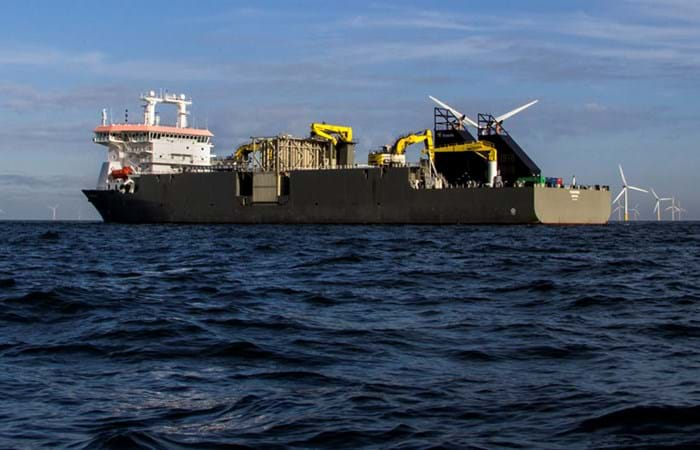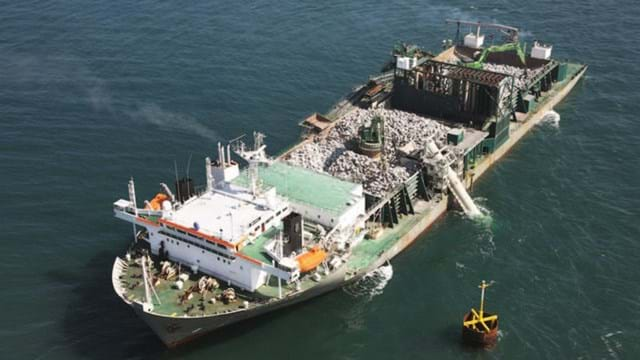With 108 wind turbines producing almost 400 megawatts, West of Duddon Sands is one of the larger European wind farms. It is being built by a joint venture of Dong Energy and Scottish Power Renewables. Boskalis Offshore and Volker Stevin Offshore - in an Offshore WindForce joint venture - were responsible for the transport and installation of the 108 foundations for the wind farm.
The wind farm is located in the Irish Sea, South of Walney and West of Blackpool. The water depth is 18-24 meters with a large tide difference of just over 8 meters. After the award of the contract in the second quarter of 2012 a large team of experts worked on all the different aspects of the project. Complex technical designs were produced for tailor-made equipment and methods. Materials were sourced and complex risk assessments conducted. And, above all, all the separate locations and subcontractors were streamlined into one efficient operation, with safety as a core value. Once the work kicked off in the first quarter of 2013, about 200 people have been working on the project. Before the monopiles were installed, the Boskalis Rockpiper, the largest fallpipe vessel in the Boskalis fleet, installed 108 perfectly round scour protection filter layers on the seabed. In total 165,005 Te filter rock and an additional 11 cable crossings were installed. Offshore Windforce was responsible for the timely delivery of the monopiles and transition pieces from Aalborg in Denmark to Belfast, a journey of 1,500 kilometers. In total the chartered EIT Palmina undertook 22 voyages to deliver the 108 mp’s and tp’s. To safeguard efficient and ongoing installation by the jack-up vessels without delays a feeder port in Belfast was designed and constructed. Offshore Windforce was responsible for tailoring the site to the complex logistical process. Two jack-up ships were deployed by the client for the installation of the monopiles: the Pacific Orca, one of the largest jack-up vessels in the market and the Sea Installer. Offshore WindForce was responsible for the extensive mobilization operation to prepare the two vessels for their specialist work. The jack-ups were equipped with an in-house designed up-ending bucket and a gripper frame which was designed by a specialist supplier. Early April the jack-up vessels arrived in Belfast and the installation of the first batch began. As all parts of the installation process are weather dependent a customized forecast system was developed and integrated into a detailed planning system. The monopiles weigh more than 500 tons each and they are almost 60 meters long depending on their location in the installation area. The transition pieces are 25 meters high and weigh 340 tons. One cycle of loading, sailing, and installing takes about 7 to 8 days. An Offshore Windforce crew, with 20 years of heavy lifting experience, operated the installation desk on board the jack ups. Using the innovative buckets and gripper frames, the world’s largest hydrohammer and state-of-the-art survey equipment the installation time of the foundations was cut/reduced with almost 40%. After handover to the client infield cables were installed and wind turbine generators were placed. The energy is transferred to land through a substation using an export cable. VBMS, another joint venture between Boskalis and Volker Wessels was responsible for laying the export cable. After the installation of the cables, a Boskalis fallpipe vessel placed the final scour protection layer around the piles using 95,000 tons of rock. The project was completed mid-2014. At West of Duddon Sands Boskalis offered tailor-made, innovative and economically attractive solutions and established its name as a successful Transport and Installation Contractor.


